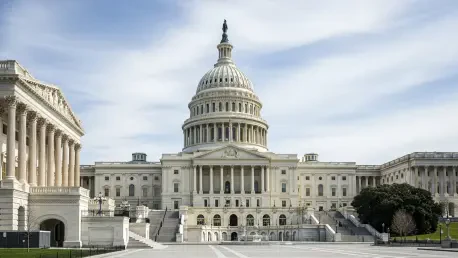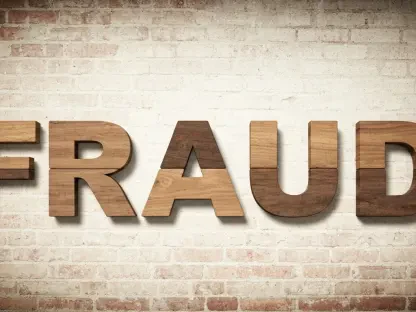The specter of a government shutdown has ignited fierce debate across political lines, with the Trump administration’s proposed layoffs at federal agencies drawing sharp criticism from Democrats who warn of devastating ripple effects on American life. As thousands of federal employees face job cuts, concerns are mounting over the potential for skyrocketing energy bills and a deepening public health crisis, including a surge in overdose deaths. Congressional leaders, such as Sen. Patty Murray (D-Wash.), have decried these reductions as not only reckless but also a deliberate attempt to undermine essential services without legislative oversight. While the administration argues that trimming staff is a necessary step to curb wasteful spending, opponents counter that the human and economic toll could be catastrophic. This pressing issue demands a closer look at the far-reaching consequences of slashing federal workforces during an already turbulent time, as the stakes for public welfare and national stability hang in the balance.
Threats to Public Health Systems
The most immediate and alarming impact of the proposed layoffs emerges within the realm of public health, particularly at the Department of Health and Human Services (HHS). Agencies like the Centers for Disease Control and Prevention (CDC) are facing significant staff reductions, with initial notices affecting over 1,300 employees, including critical roles such as data scientists and chronic disease specialists. Democrats argue that these cuts threaten the nation’s readiness to tackle health emergencies, from infectious disease outbreaks to natural disasters. A diminished workforce could mean slower response times and weaker communication of vital information to the public, leaving communities vulnerable at a time when preparedness is paramount. The fear is that such reductions could dismantle years of progress in building resilient health systems, putting countless lives at risk when crises inevitably strike.
Equally concerning is the effect on efforts to address the nation’s ongoing overdose epidemic through the Substance Abuse and Mental Health Services Administration (SAMHSA). Staffing levels at this agency have already dwindled to less than half of what they were at the start of the Trump administration, and further cuts could cripple programs aimed at curbing addiction and supporting youth mental health. Additional layoffs at HHS also jeopardize funding for depression treatment, family planning, and emergency medical services for children, as highlighted by Democratic lawmakers. These reductions could translate into less support for vulnerable groups, including domestic violence survivors, exacerbating social challenges that are already difficult to manage. The broader implication is a public health infrastructure stretched too thin to meet the needs of a nation grappling with complex, interconnected crises.
Rising Energy Expenses for Households
Turning to the energy sector, the layoffs at the Department of Energy (DOE) are poised to drive up costs for American households, according to Democratic critics like Rep. Marcy Kaptur (D-Ohio). Programs such as the Weatherization Assistance Program, which receives $360 million annually to improve energy efficiency for low-income families, face significant risks due to reduced staffing. With fewer personnel to oversee grants and ensure proper implementation, delays and inefficiencies could become commonplace, ultimately leading to higher energy bills for consumers already struggling with tight budgets. The potential loss of focus on energy-saving initiatives undermines efforts to provide affordable utilities, a cornerstone of economic stability for many communities across the country.
Beyond immediate costs, the cuts at DOE also threaten long-term progress in energy innovation and supply chain security. Research initiatives within the Office of Energy Efficiency and Renewable Energy, designed to lower expenses through sustainable solutions, are now in jeopardy with a shrinking workforce. Democratic lawmakers warn that diminished capacity for audits and oversight could result in misconduct or mismanagement, further stalling advancements in domestic energy production. While the administration defends these layoffs as a rollback of costly regulations, critics argue that sacrificing research and monitoring will burden taxpayers with steeper prices down the line. The tension between short-term savings and sustainable affordability highlights a critical policy divide that could reshape the energy landscape for years to come.
Educational Support and Oversight in Peril
The education sector faces its own set of challenges as layoffs at the Department of Education put vital programs at risk, particularly for the most vulnerable students. Reductions in the Office of Special Education Programs endanger $15 billion in funding that supports 15 million children with special needs, raising alarms among Democrats about the erosion of essential services. Additional cuts in areas like the Office of Elementary and Secondary Education could weaken efforts to ensure schools comply with federal laws and provide resources for homeless children. The concern is that these actions do not enhance efficiency as claimed, but instead create gaps in accountability, leaving students without the protections and opportunities they deserve at a critical stage in their development.
Moreover, the broader issue of oversight looms large across all affected agencies, with a reduced workforce seen as a direct threat to the proper management of taxpayer dollars. Fewer staff members mean less capacity to monitor programs, meet funding deadlines, and prevent fraud or waste, as emphasized by Democratic leaders. In the education realm, this could result in diminished enforcement of rights for students with disabilities and slower responses to systemic issues within schools. The administration’s focus on trimming what it deems non-essential roles clashes with warnings that such cuts erode the government’s ability to fulfill statutory responsibilities. This ongoing battle over priorities underscores a deeper question about balancing fiscal restraint with the fundamental need to safeguard public institutions.
Navigating the Path Forward
Reflecting on the intense controversy surrounding these federal layoffs, it becomes evident that the clash between cost-cutting measures and service preservation has sparked a profound national debate. The warnings from Democrats about heightened energy costs, worsening overdose rates, and compromised educational support paint a grim picture of the potential fallout. Yet, the administration’s stance on eliminating inefficiencies has also found its defenders, framing the reductions as a necessary recalibration of government priorities. As the dust settles on these initial skirmishes, with legal challenges temporarily halting further cuts, the focus shifts to finding a sustainable resolution. Moving ahead, policymakers must prioritize transparent dialogue and strategic planning to mitigate harm, ensuring that any workforce adjustments are paired with robust safeguards for public health, energy affordability, and student welfare. Only through such deliberate steps can the balance between fiscal responsibility and societal well-being be achieved.









